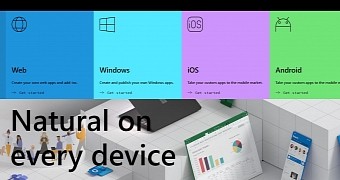Fluent Design, which is Microsoft’s design language that made its debut on Windows 10 and is now expanding to other products, is set to step beyond the borders of Microsoft’s operating system.
The company is bringing Fluent Design to non-Microsoft platforms like iOS, Android, and the web, and this effort is powered by Fabric, a new collection of UX frameworks available on these platforms.
Microsoft is putting a lot of work into Fluent Design, albeit its implementation evolves at a slower pace than originally anticipated.
Fluent Design, which consists of a series of visual improvements across an always-growing portfolio of Microsoft products, is currently available in Windows 10, UWP apps, and Win32 software, with today’s announcement the software giant is gradually expanding it to more products.
Fluent Design on mobile
Microsoft wants Fluent Design to become a key part of the mobile experience as well, and the official page of the design language provides access to the necessary resources for developers who want to embrace it.
“Offer people a seamless experience across the entire portfolio of Microsoft's mobile apps. Whether it's for a client, partner, or your own customers, design and build custom apps that are natively Android while still uniquely Fluent,” Microsoft explains.
“We’re hoping to make this as easy as possible for you by sharing the same toolkits we use. We’ll do our best to keep them up-to-date and broaden the offering to other design applications in the future.”
The Fabric frameworks are already being used by Microsoft for a series of mobile apps, including those included in the Office productivity suite, like Word, Excel, PowerPoint, and Outlook.
You can check out the link above for more information on Fluent Design and resources on how to bring this design language to mobile apps on Android and iOS.

 14 DAY TRIAL //
14 DAY TRIAL //